Monday, 12:00pm
22 January 2024
Parisienne walkways
Boutiques (trilogy)
The Mainstone Press, 2023, £100 (each) Design: Webb & WebbA new trilogy from the Mainstone Press is a whimsical journey through shopfronts, fairgrounds and the literary scene of 1920s Paris. By Gabriela Matuszyk
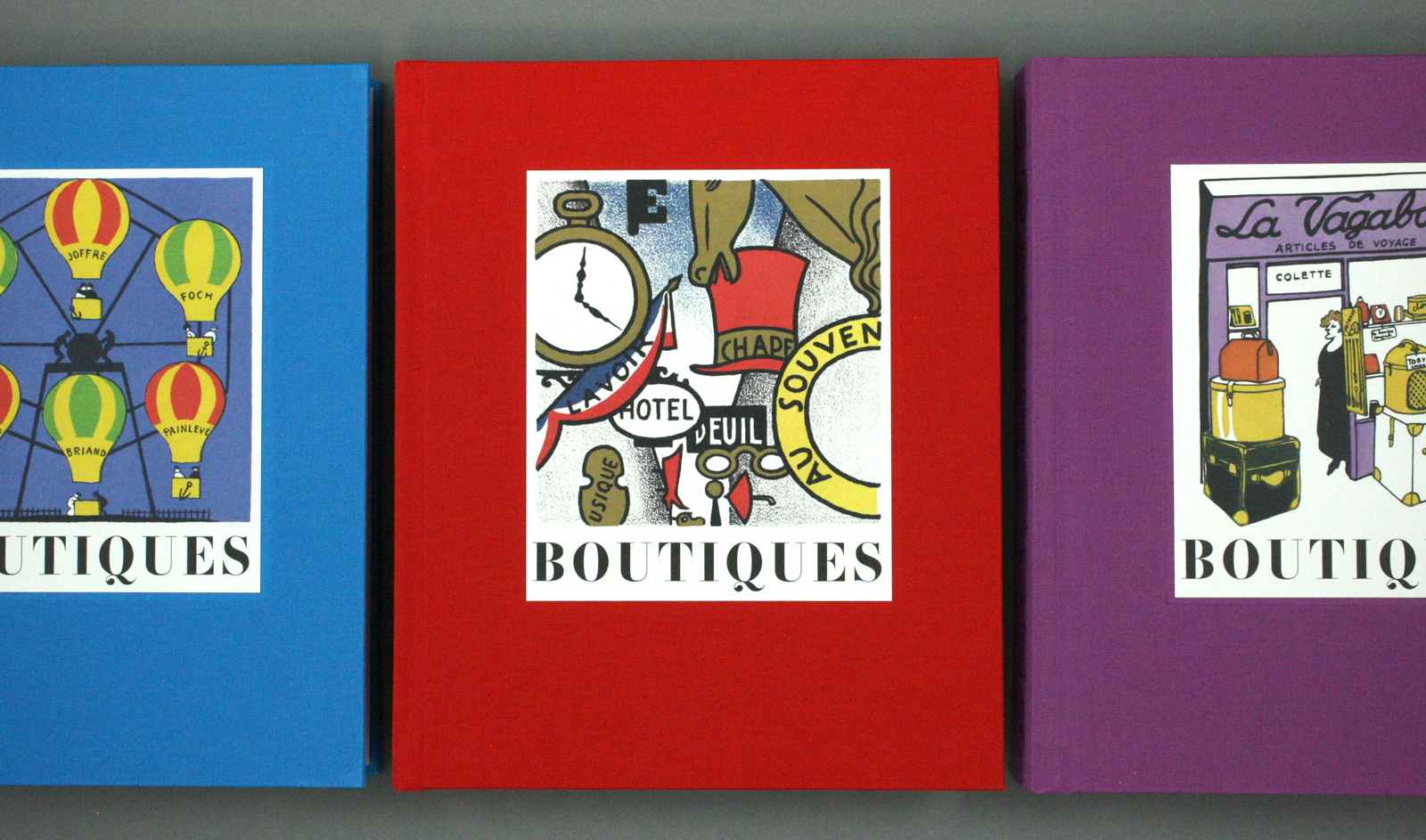
The Mainstone Press may be known to those interested in British artist, designers and illustrators from the turn of twentieth century, featuring artists such as Eric Ravilious, John Piper (see Eye blog) or Paul Nash (see Eye 70). For this recent set of books, the independent publisher has ventured over to the streets of 1920s Paris, with three books on shopfronts, fairgrounds, writers and style moderne illustrations. The Boutiques trilogy is the result of ten years of research poured into a charming and well considered outcome.
Map of Paris by Lucien Boucher featured in the first book of Boutiques.
Top. Covers of the trilogy.
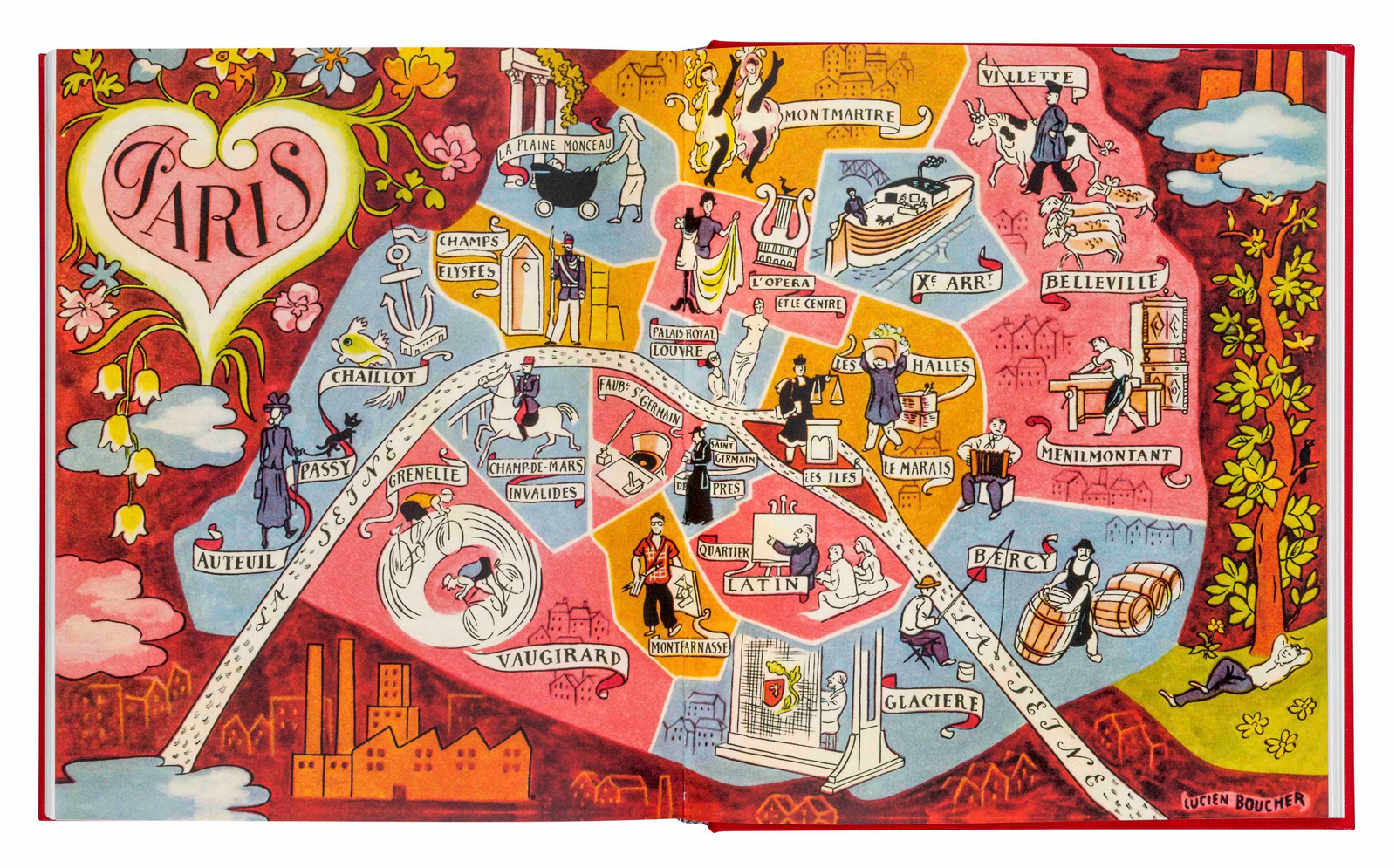
Designed by Webb & Webb design studio in London, the books were produced to a high standard, featuring several finishing details. Each brightly coloured hardback is cloth-bound and decorated with a tipped-in cover illustration. Bold typographic debossing is visible on each spine. The trilogy was limited to 500 copies of each book, including 30 special leather-bound editions.
Illustration by Boucher of a millinery shop front.
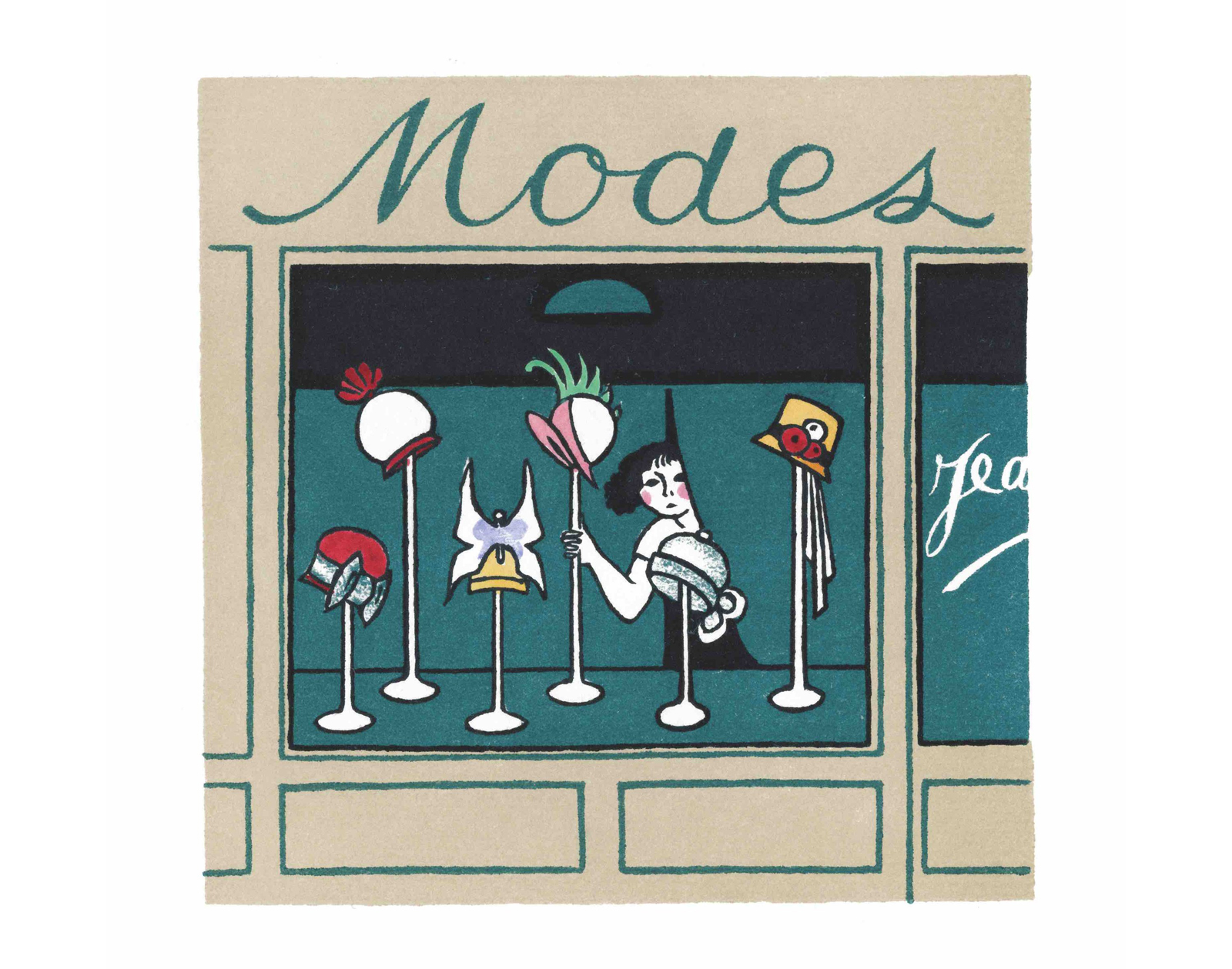
Boucher’s vision of a helter-skelter with a factory in the background. Featured in Boutiques de la foire.
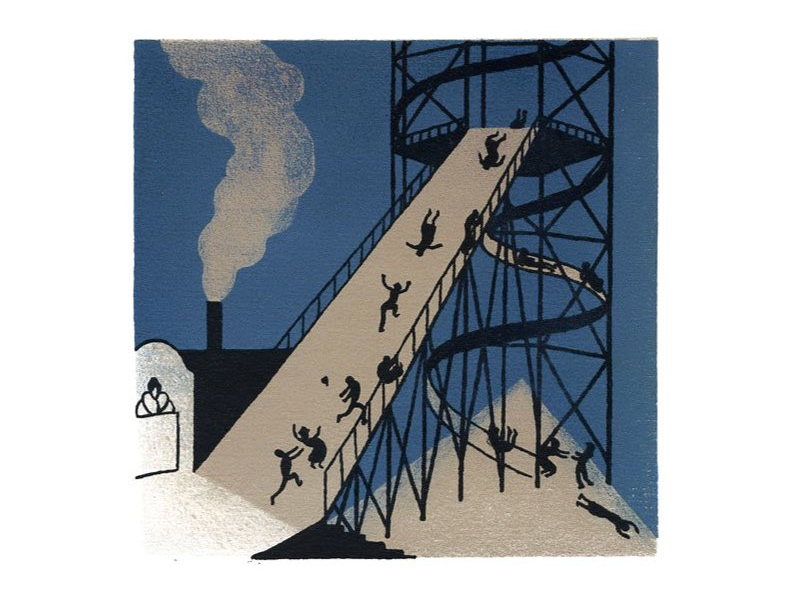
Each titles focuses on a different subject. Boutiques, the first of the series, was originally published in 1925 by Marcel Seheur. Upon opening the vibrant red cover, a series of boutique shopfronts illustrated by Lucien Boucher give a snapshot of Parisian streets at the time. The second book (blue cover), Boutiques de la foire, pictures different fairground attractions in 36 lithographs by Boucher. Unlike the first two titles, Boutiques Littéraries (purple cover) features pochoir illustrations drawn by Henri Guilac, who took a rather Surrealist approach to capturing the Parisian literary scene. Each shopfront image represents one of 62 prominent writers, such as Philippe Soupault or Georges Duhamel, who were reimagined as shop owners.
Boutiques Littéraries: Henri Guilac named the shop of Sidonie-Gabrielle Colette La Vagabonde after her famous novel.
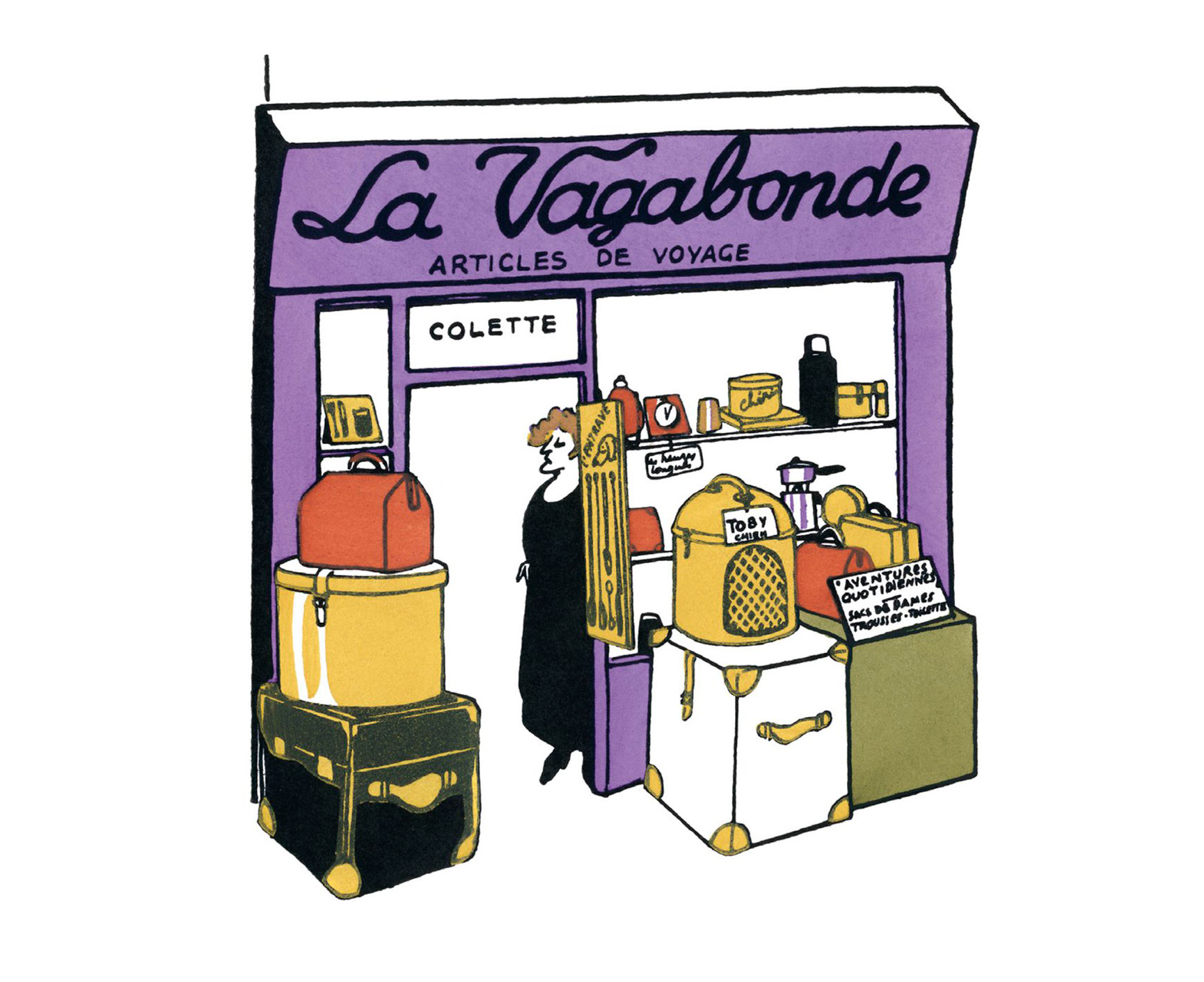
The imaginary boutique of French author Georges Duhamel (1884-1966), as seen in Boutiques Littéraries.
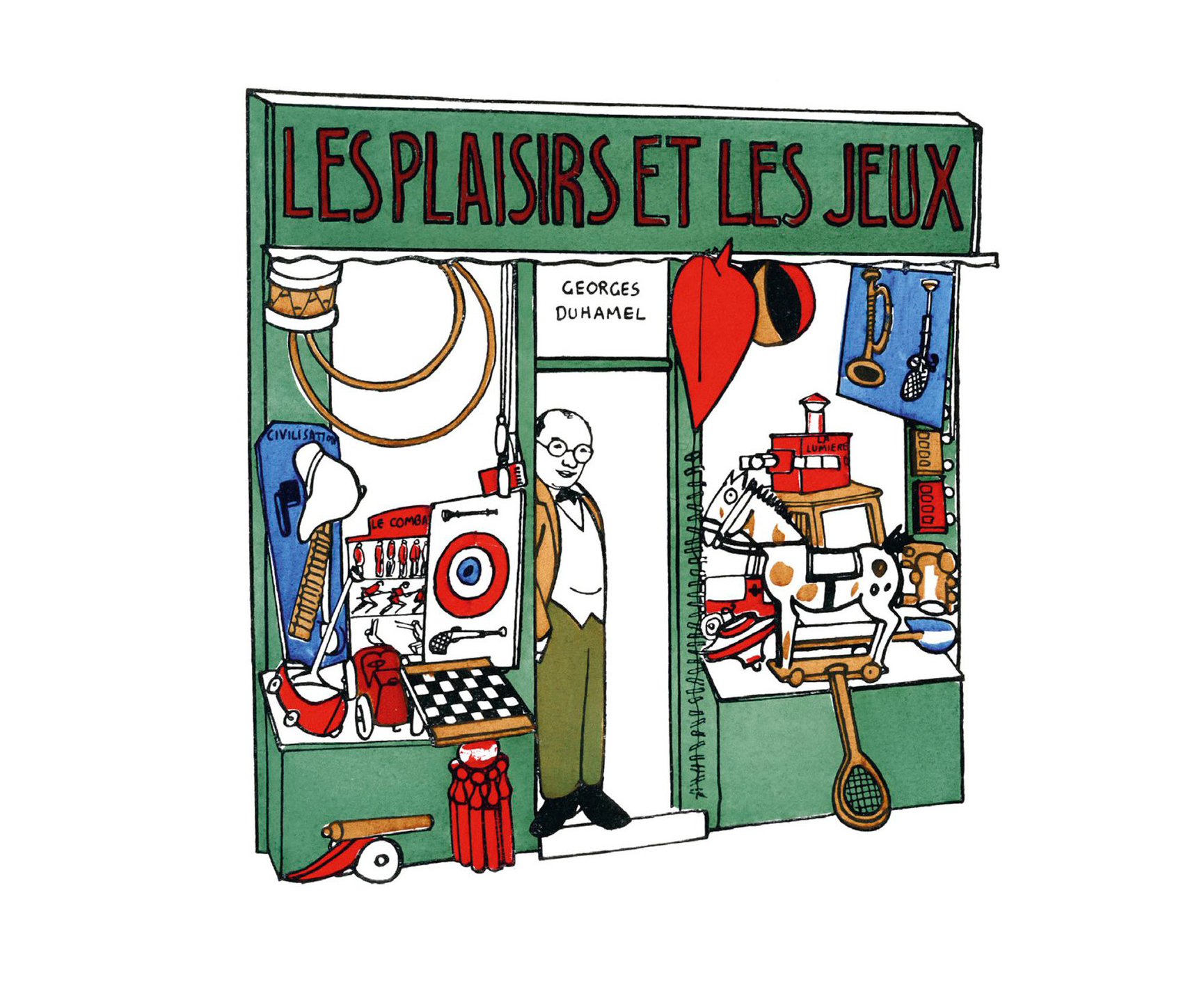
The series is tied together by Webb & Webb’s consistent approach to design and content. The first section of each book is an homage to the original publications; illustrations and accompanying text play on the theme of nostalgia, in keeping with the same layout and typography as the originals. But Boutiques does far more than documenting Seheur’s books. Alongside the images are short captions by Andrew Stewart, who extrapolates on the details within illustrations into narratives, providing contemporary commentary of Boucher’s and Guilac’s artistic processes as well as some historic and social context. Paired with new essays, original texts, poems, and historic photography, each book is a well researched endeavour that is both accessible and enjoyable.
Spreads with Stewart’s captions and reproduced illustrations follow the layouts of original books closely.
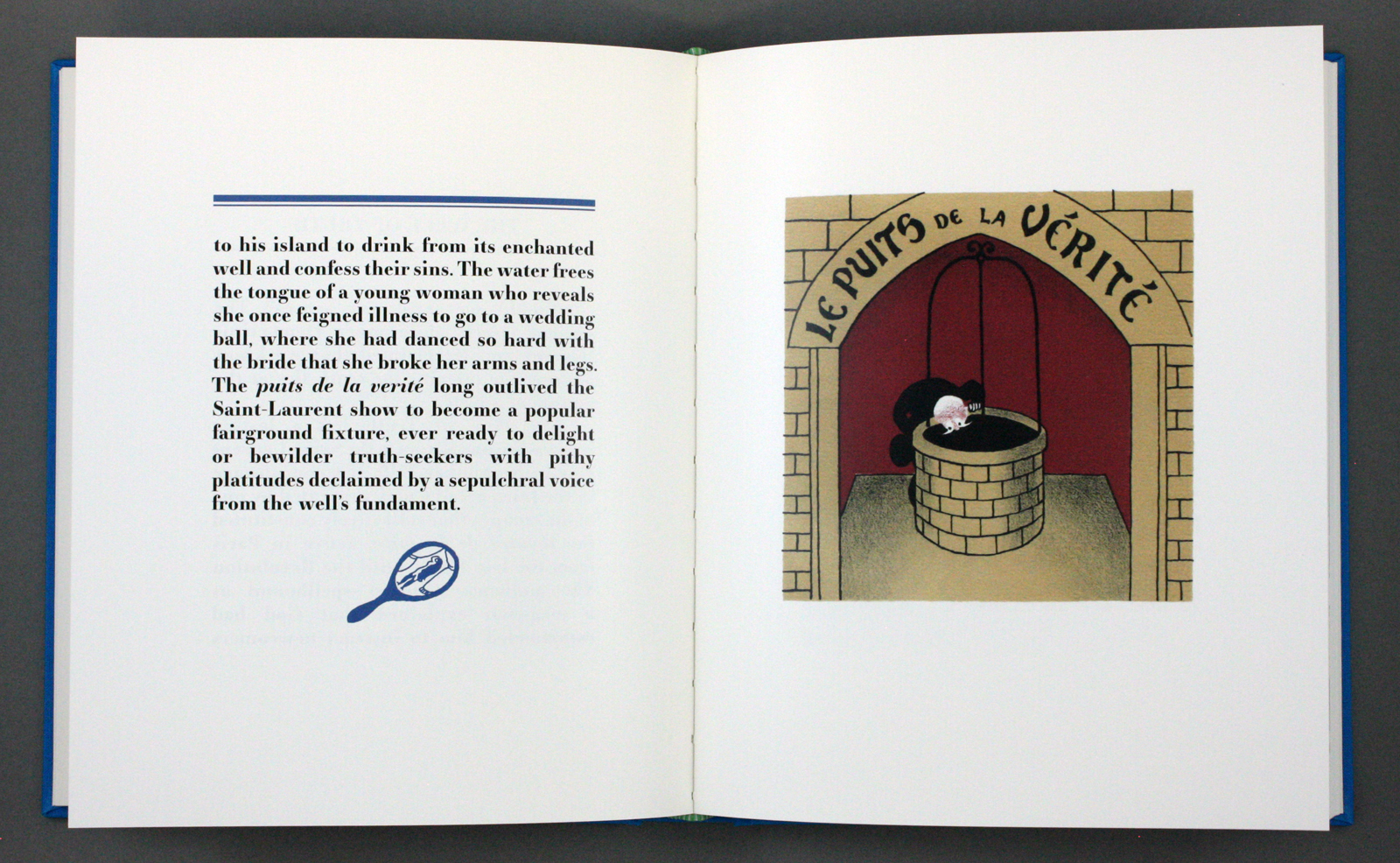
Spread from Boutiques de la foire with poems by Mac Orlan, who wrote captions in the original books, paired with archival photographs rather than illustrations.
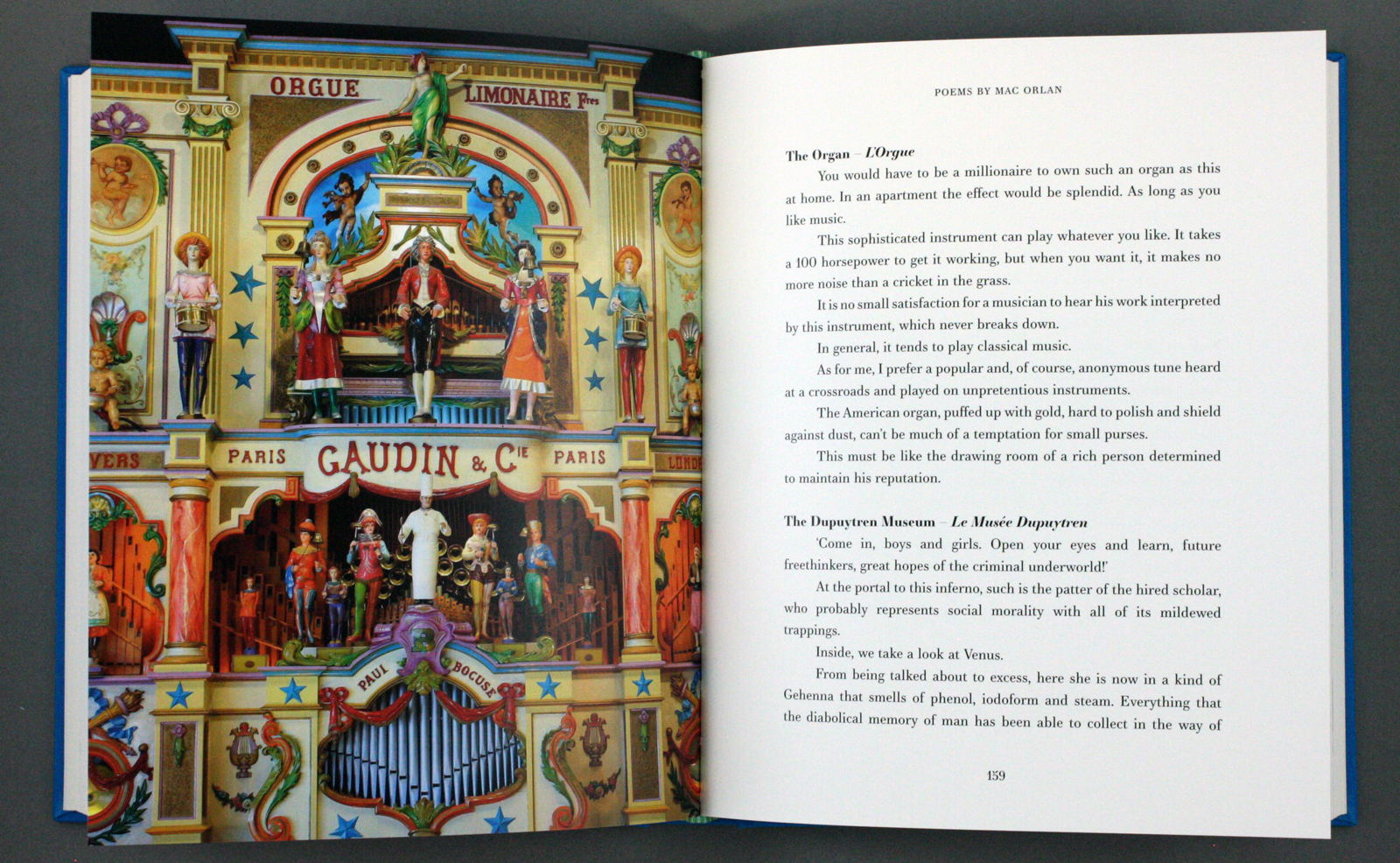
Gabriela Matuszyk designer, writer, editor, London
Eye is the world’s most beautiful and collectable graphic design journal, published for professional designers, students and anyone interested in critical, informed writing about graphic design and visual culture. It is available from all good design bookshops and online at the Eye shop, where you can buy subscriptions and single issues.
